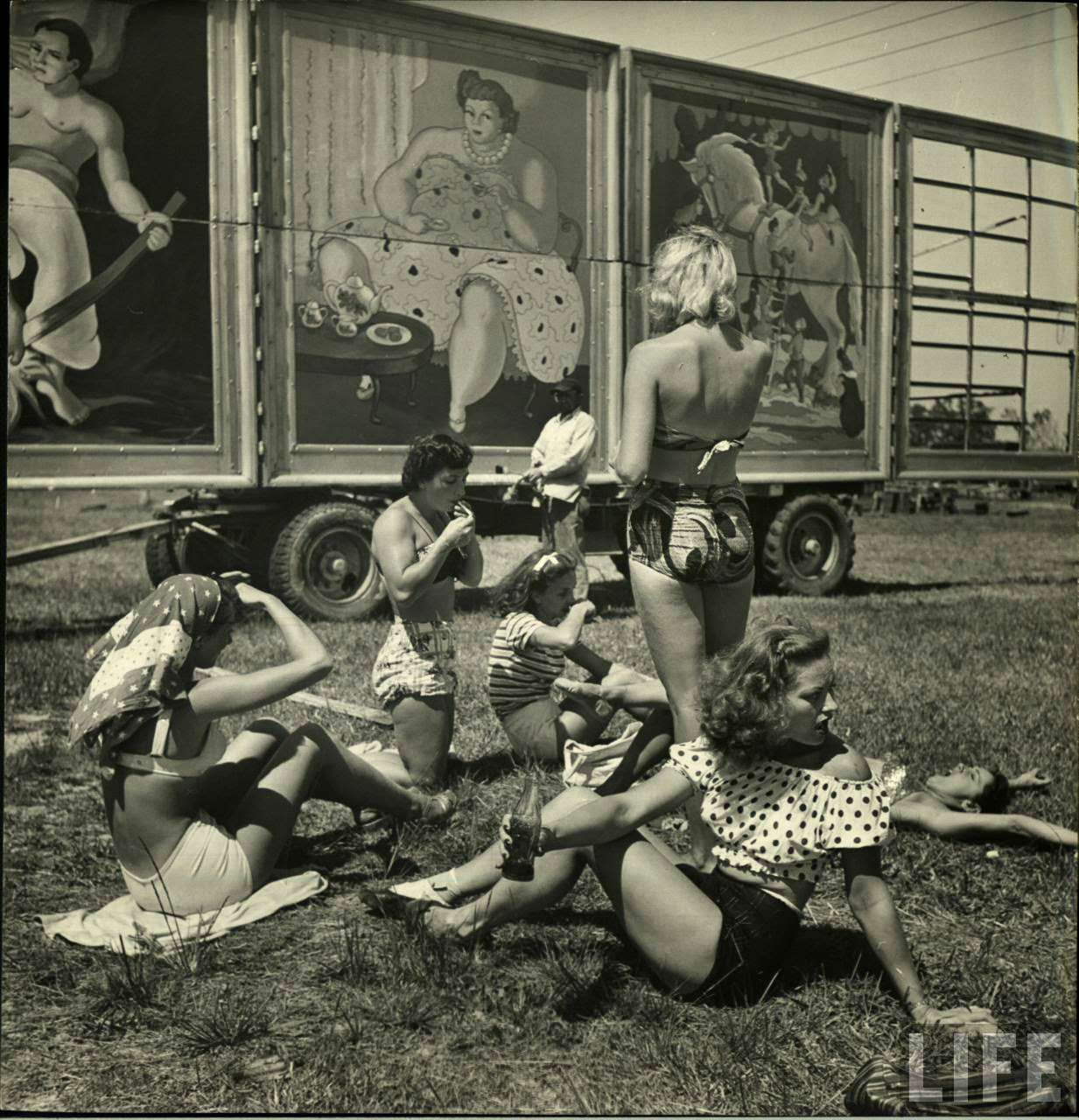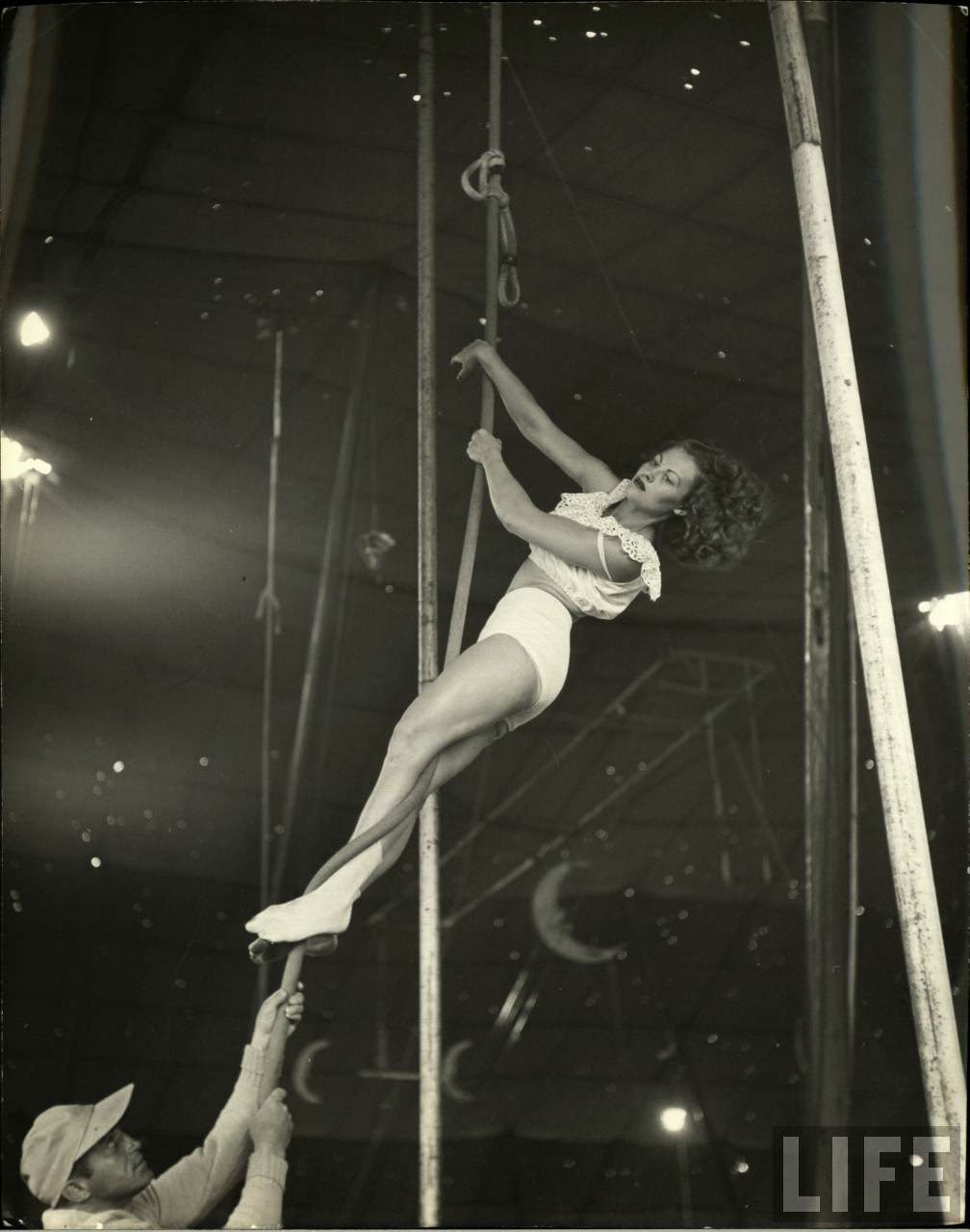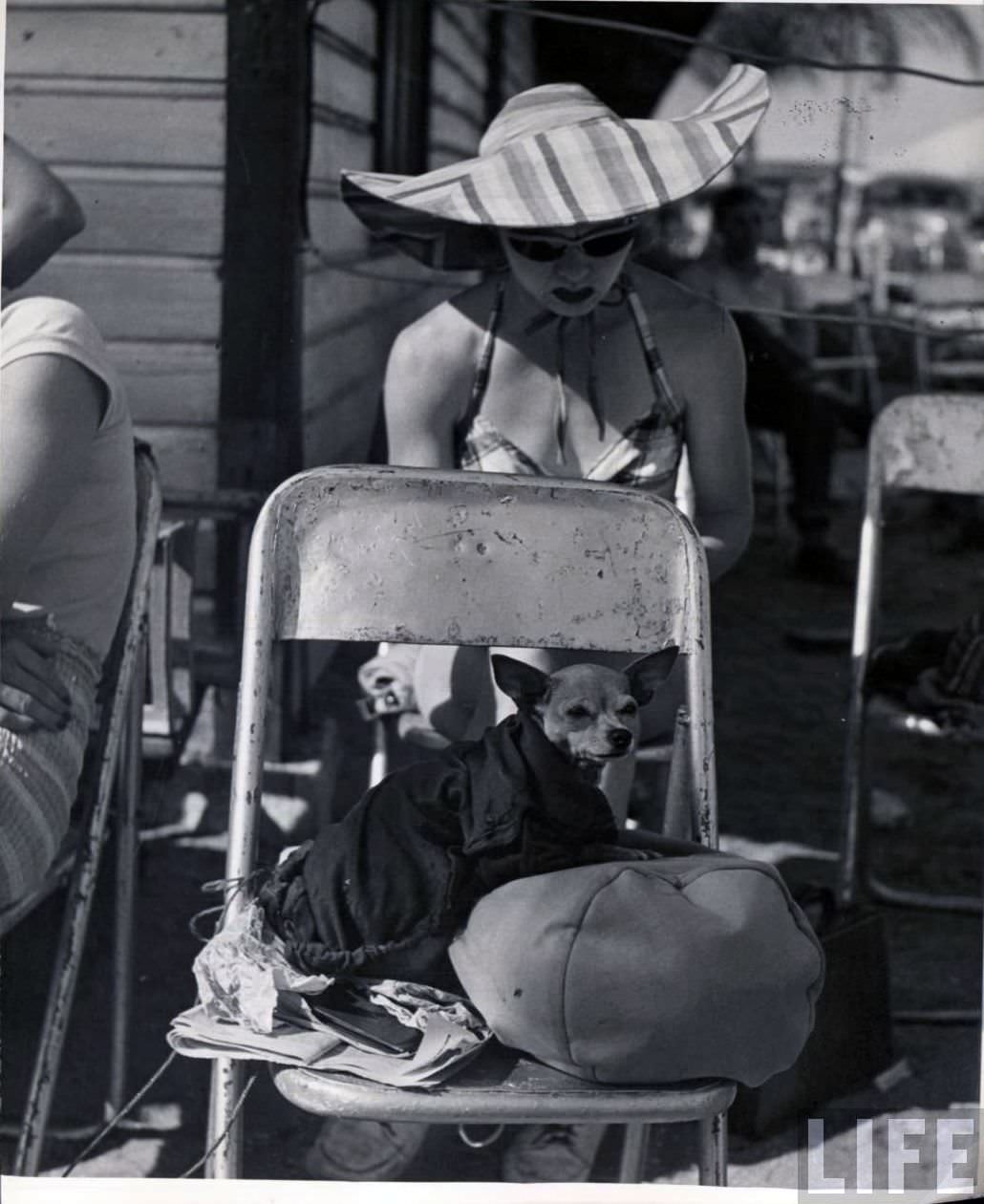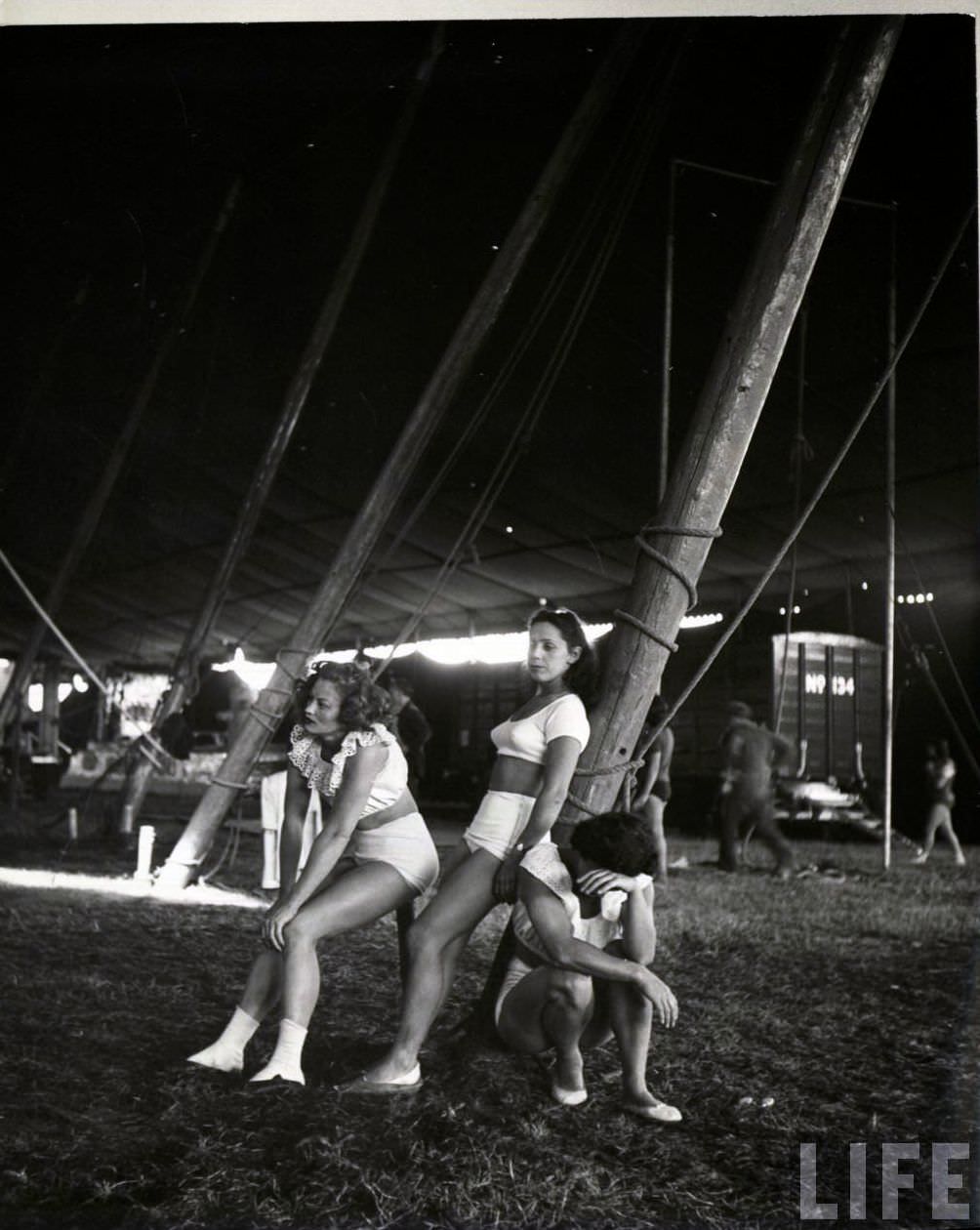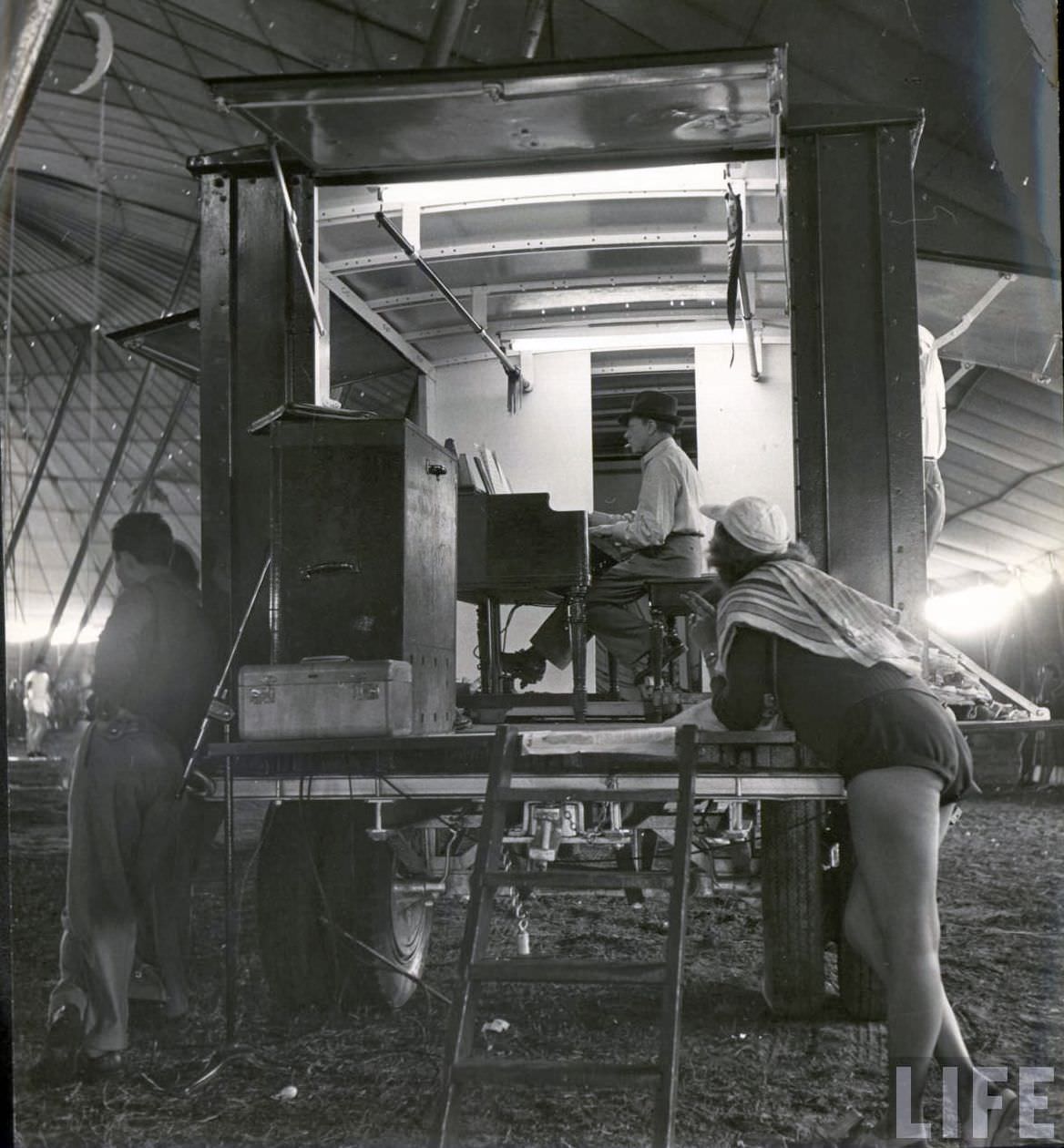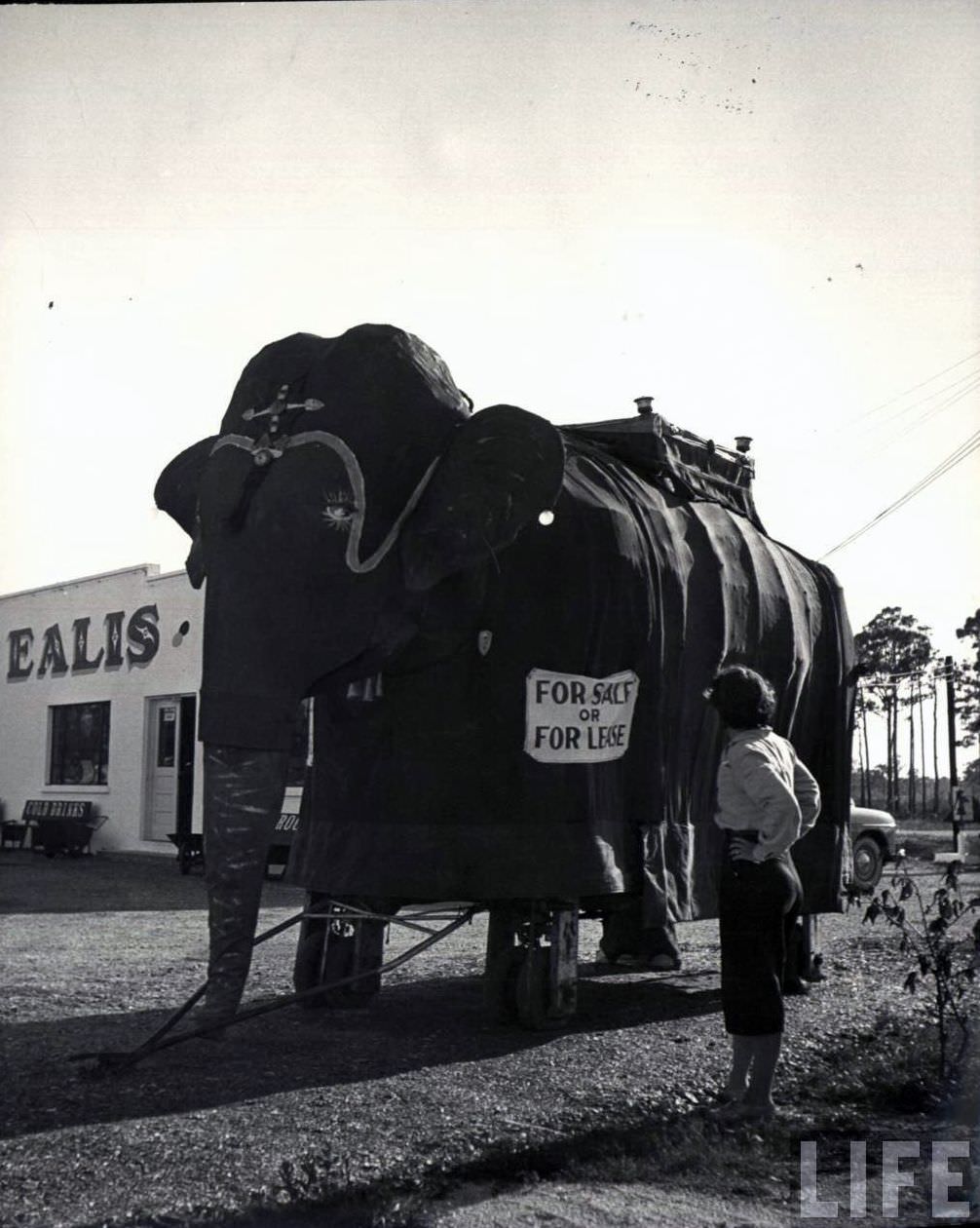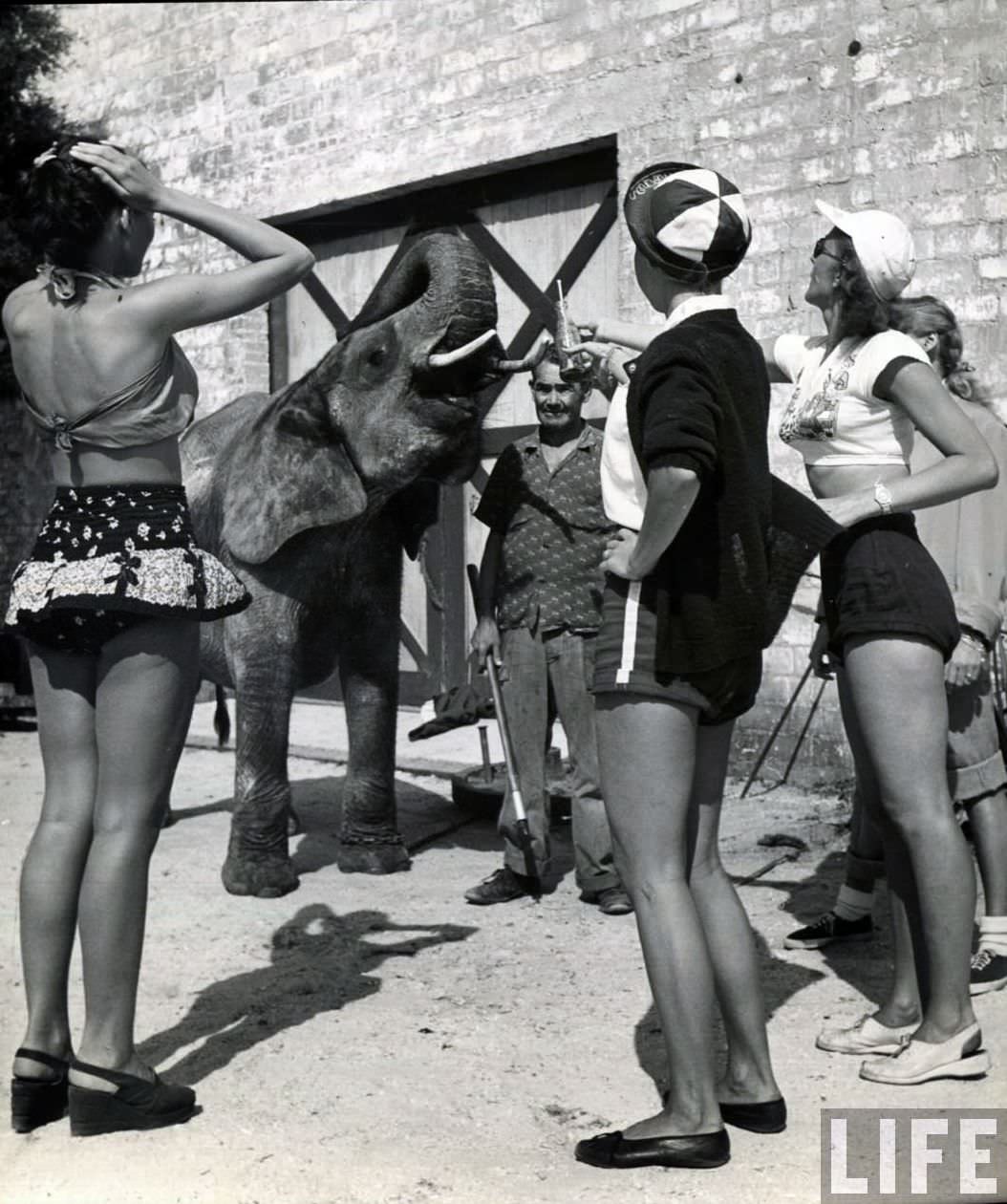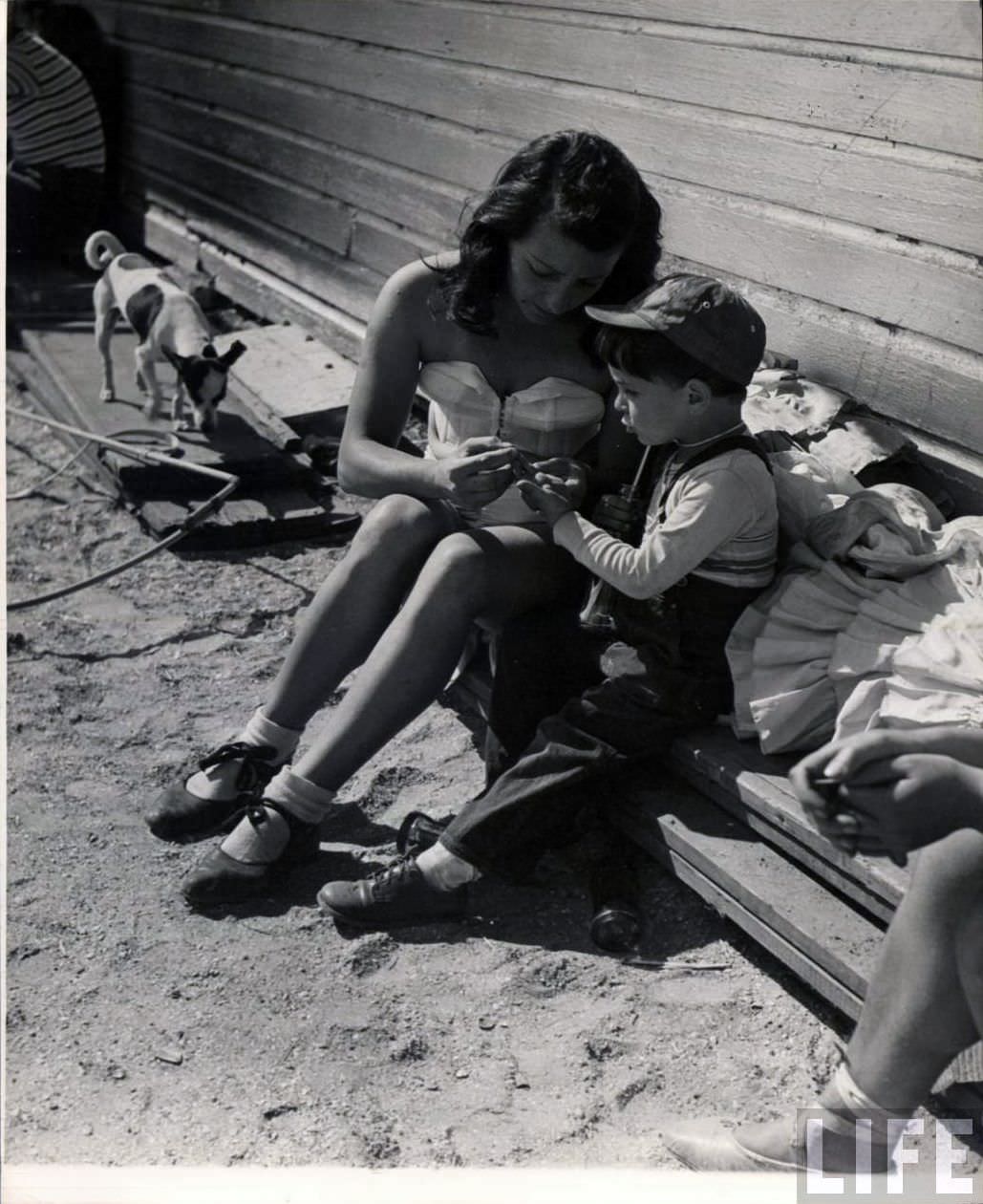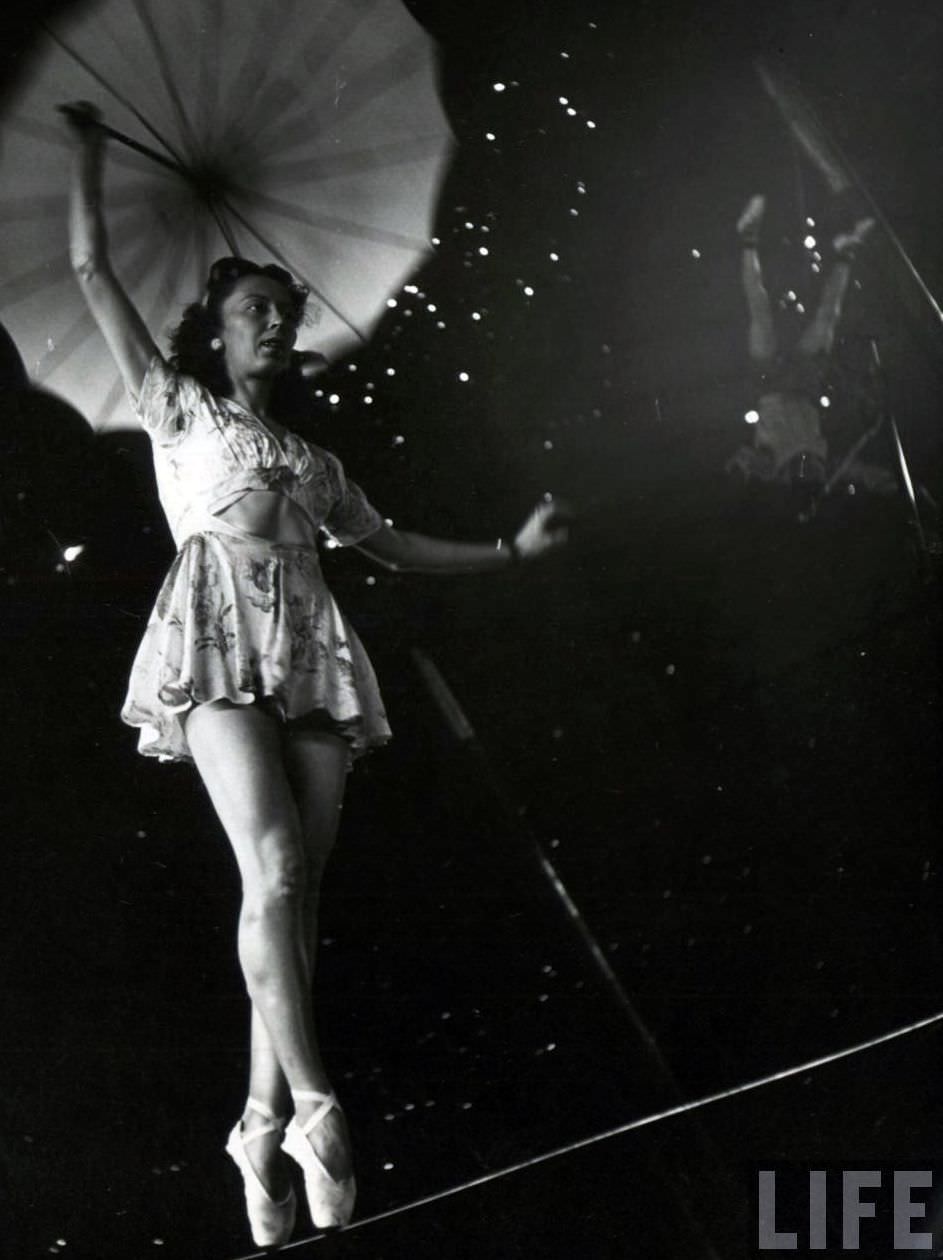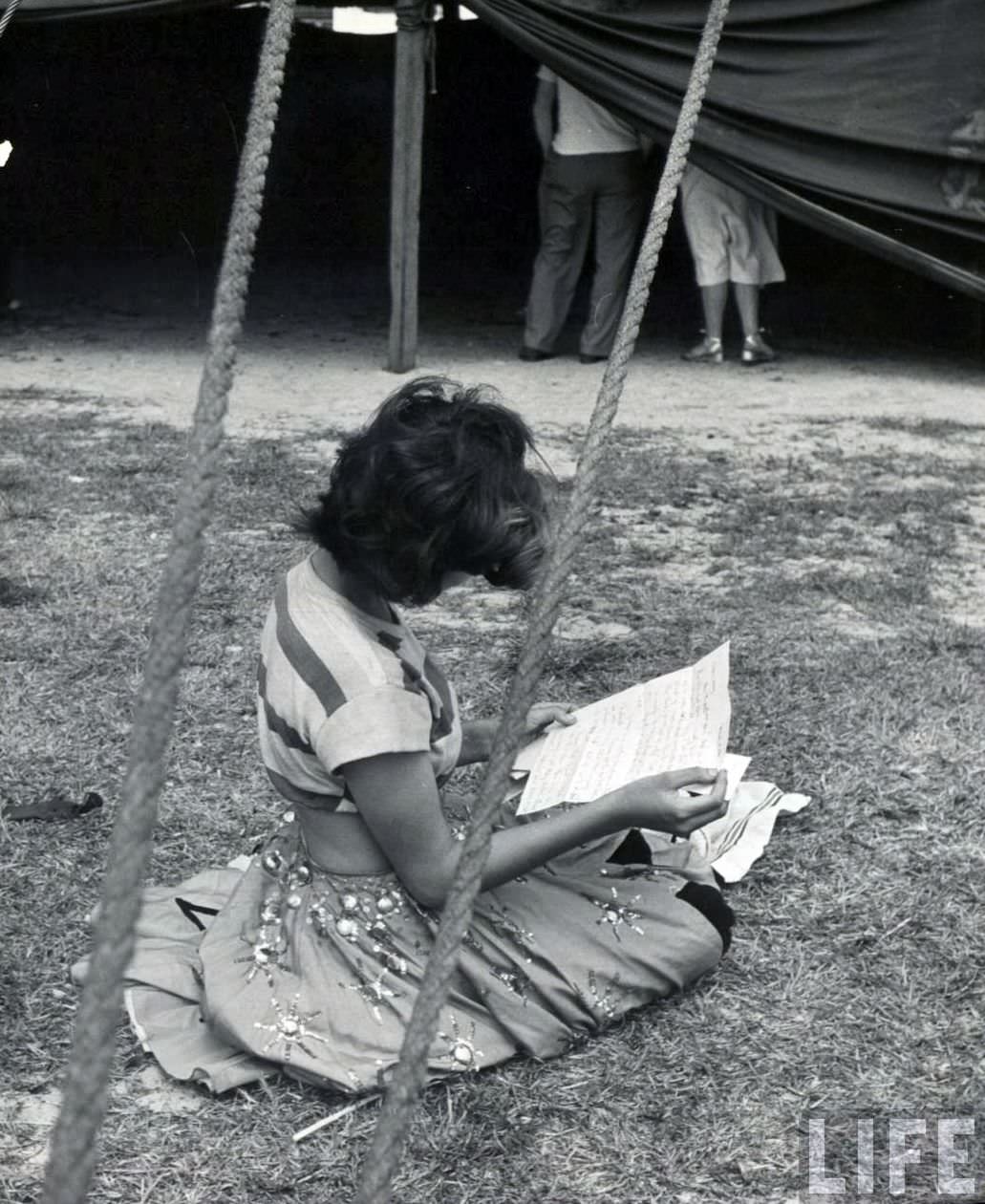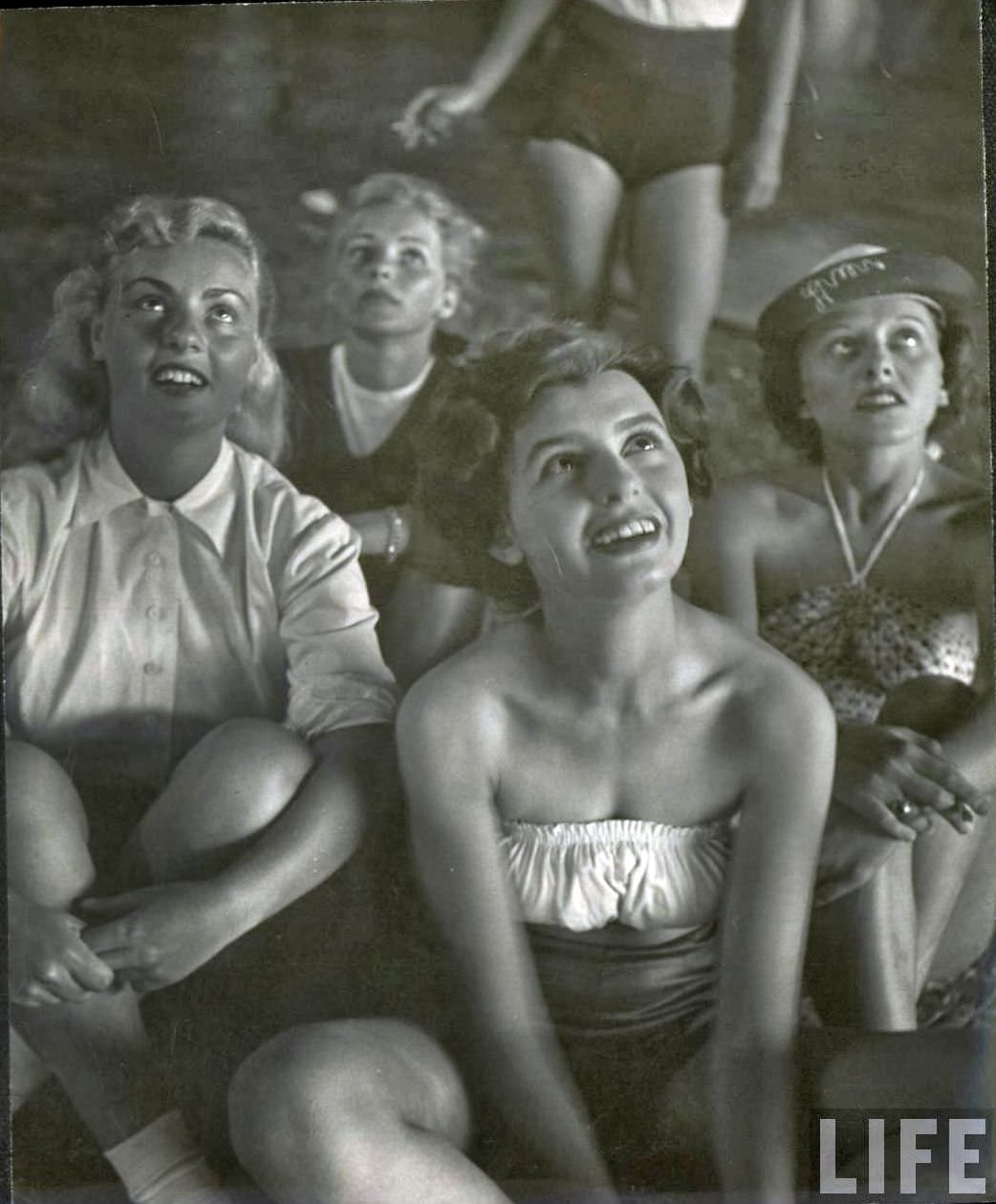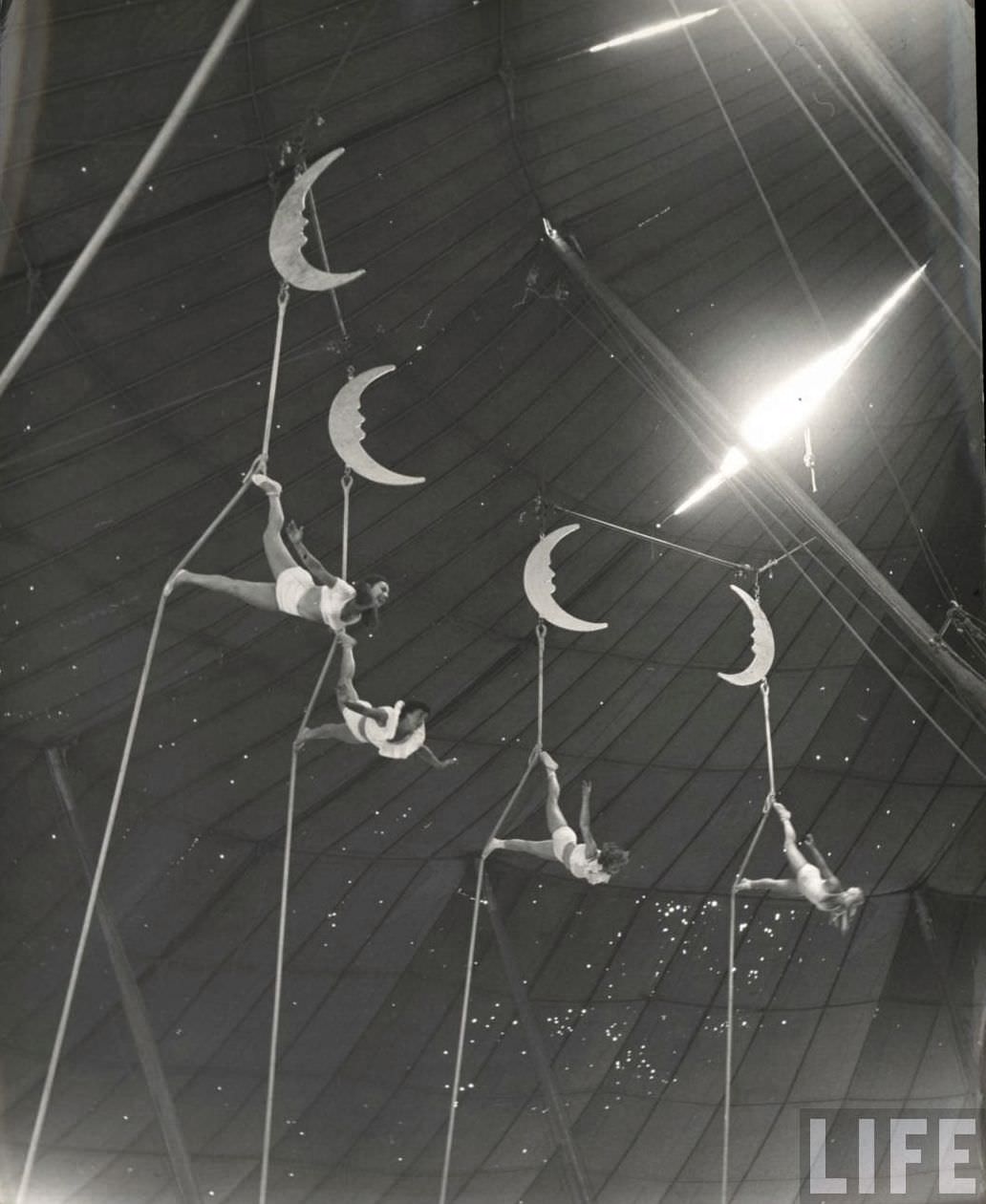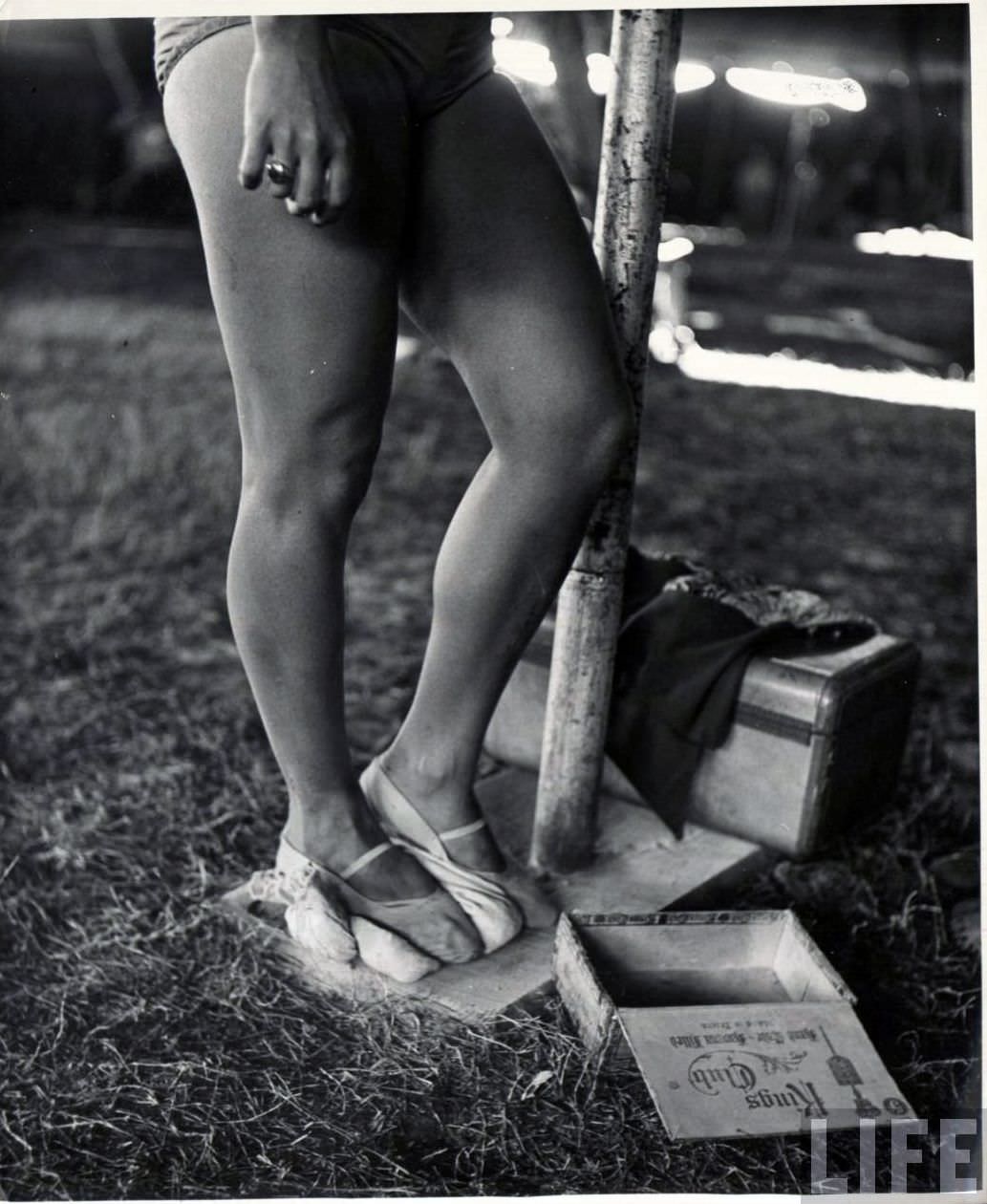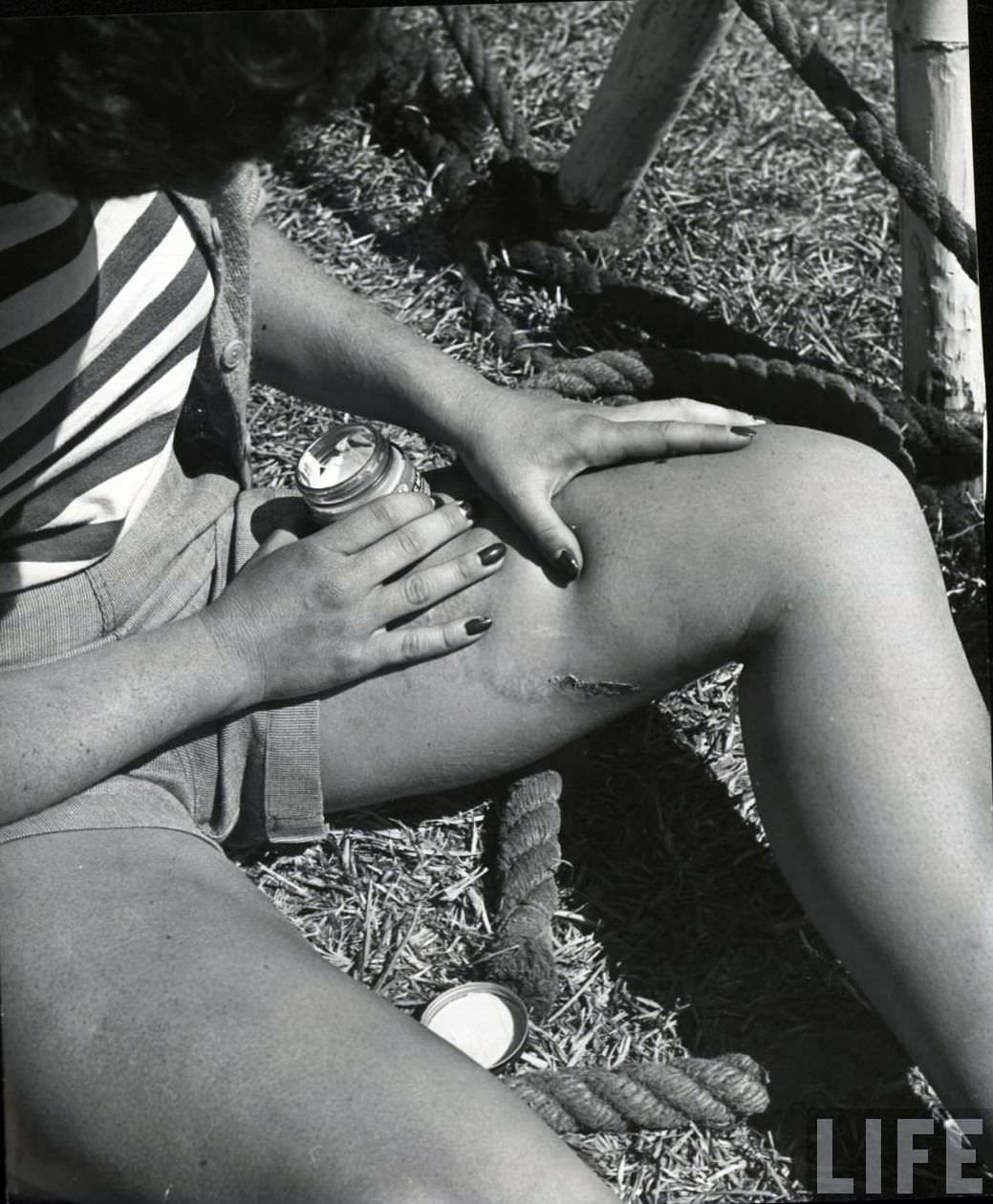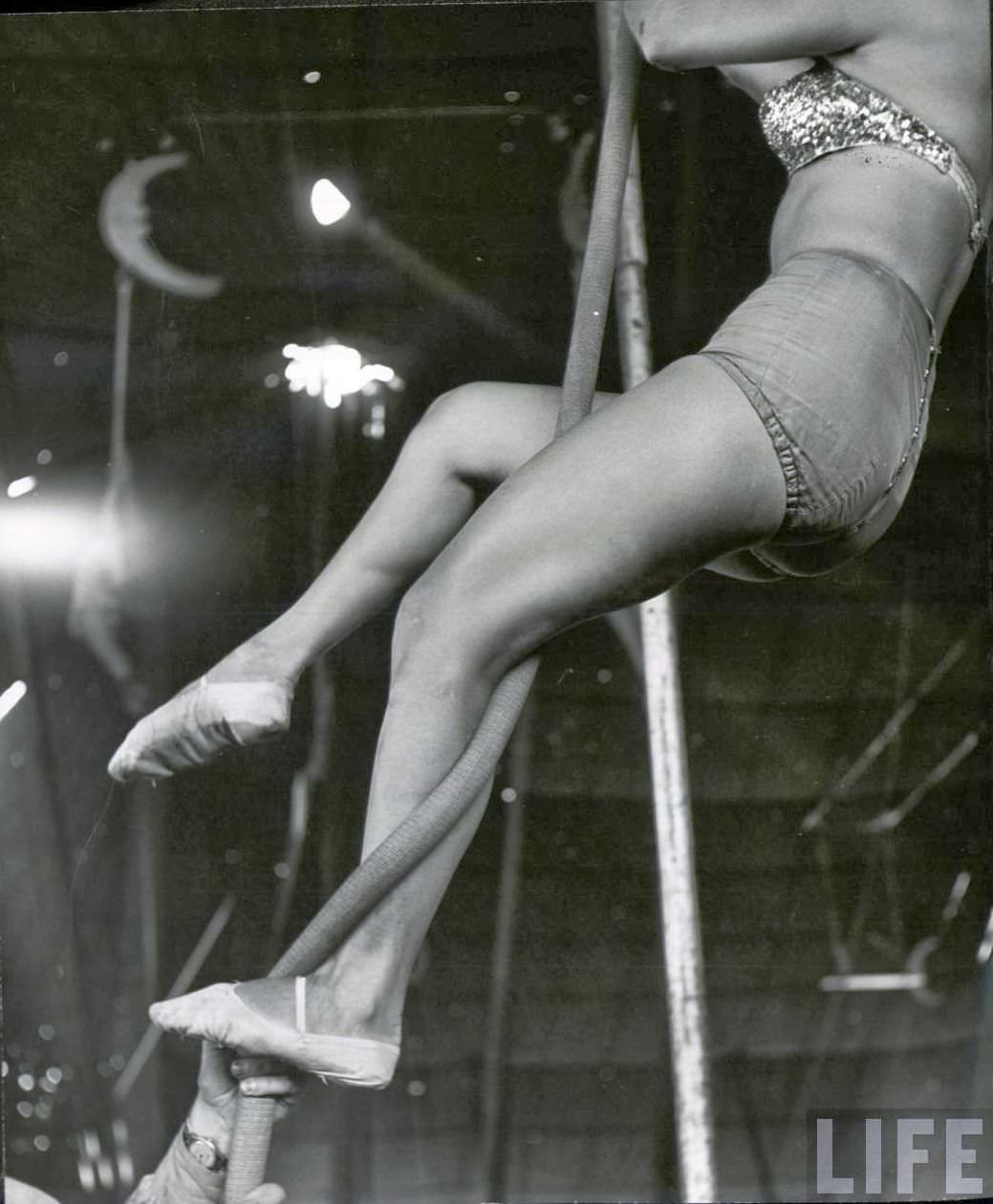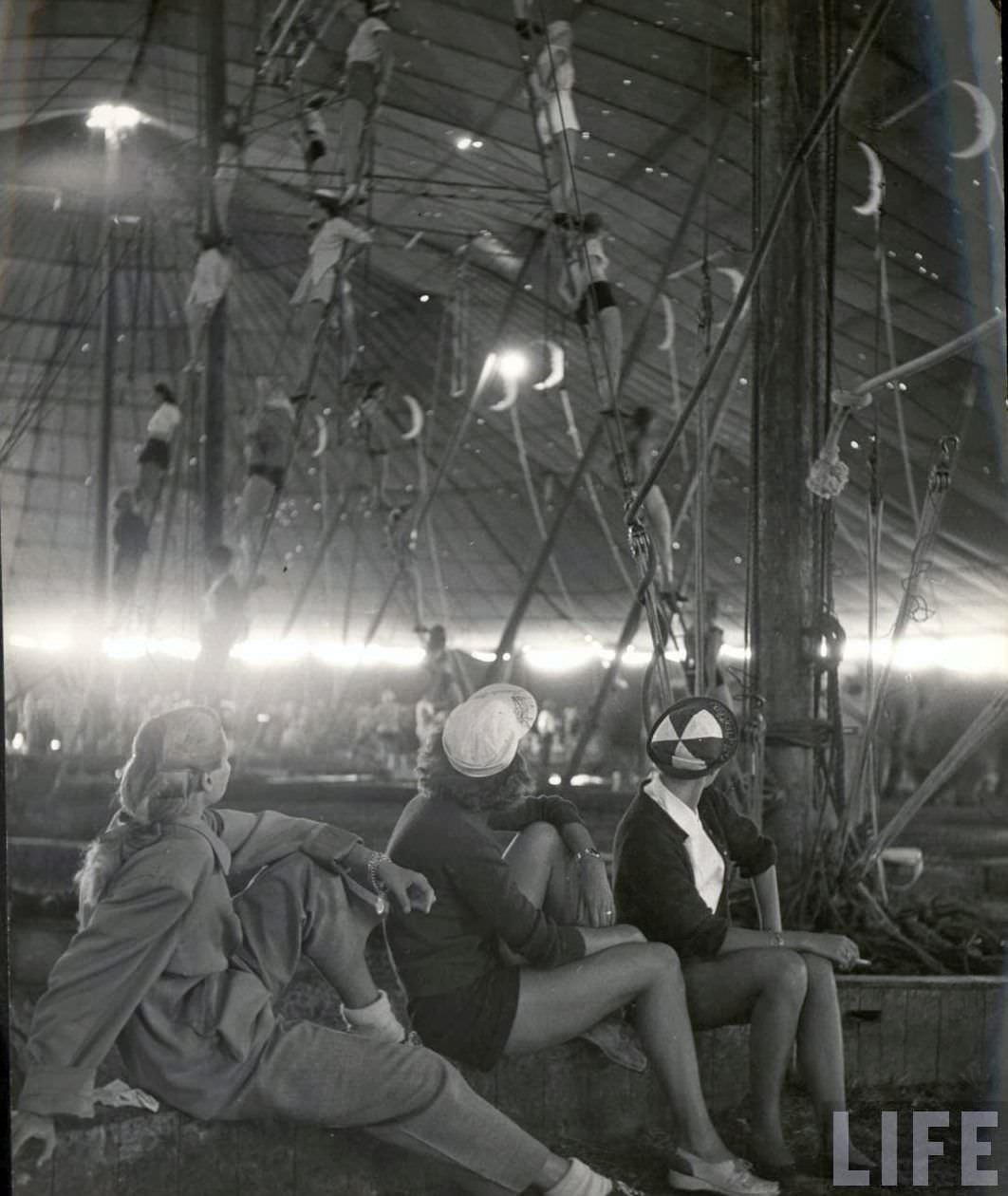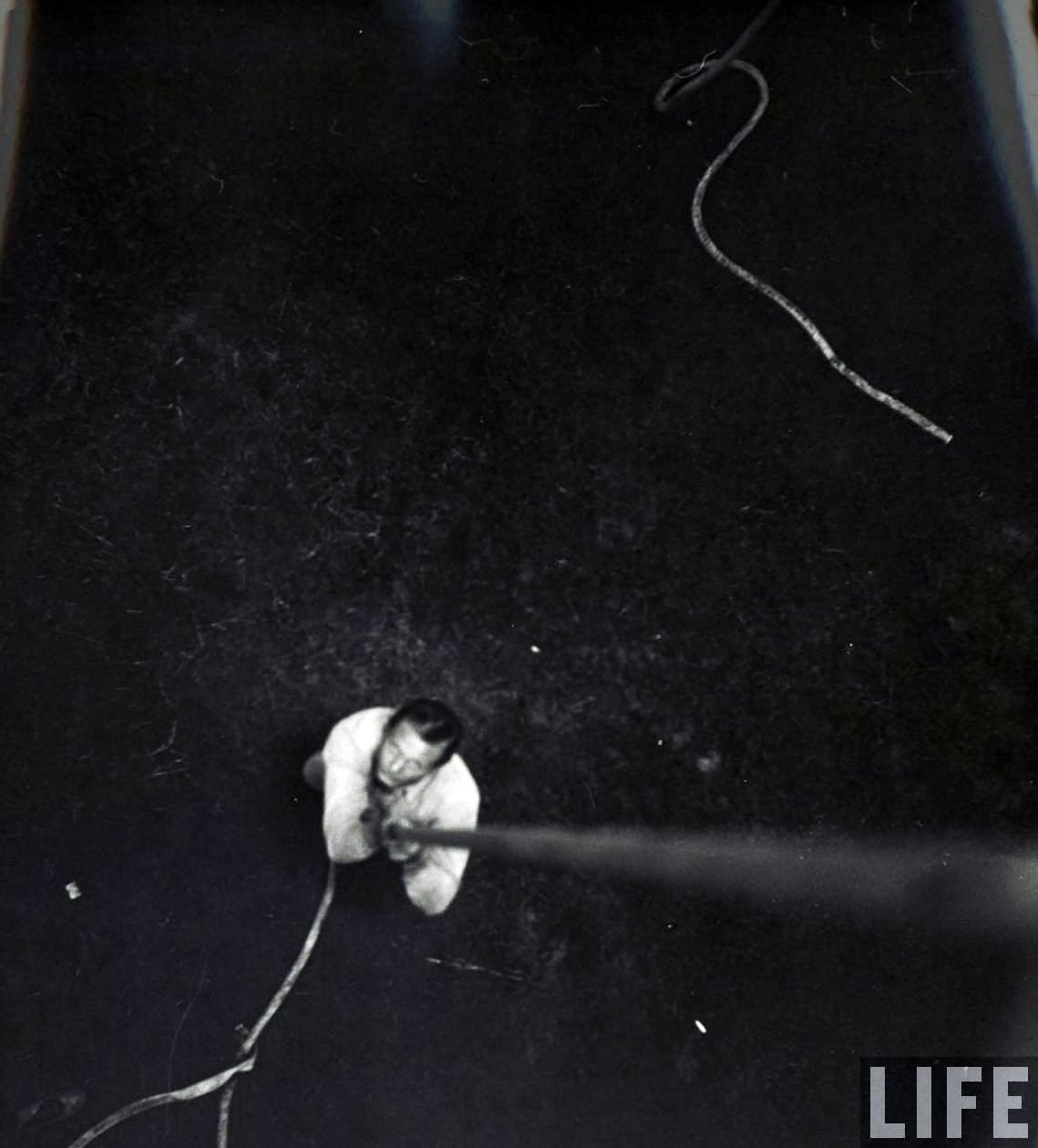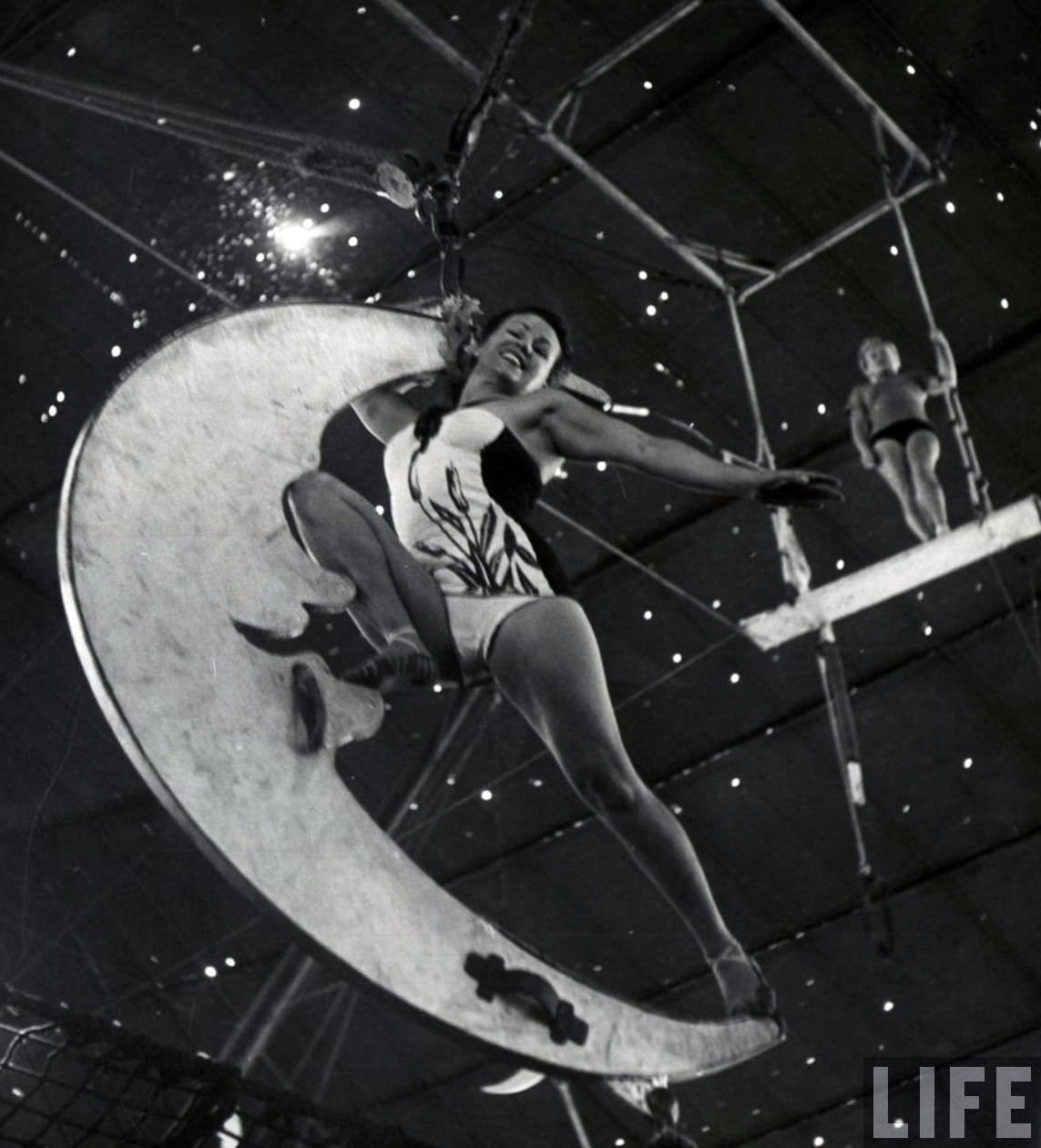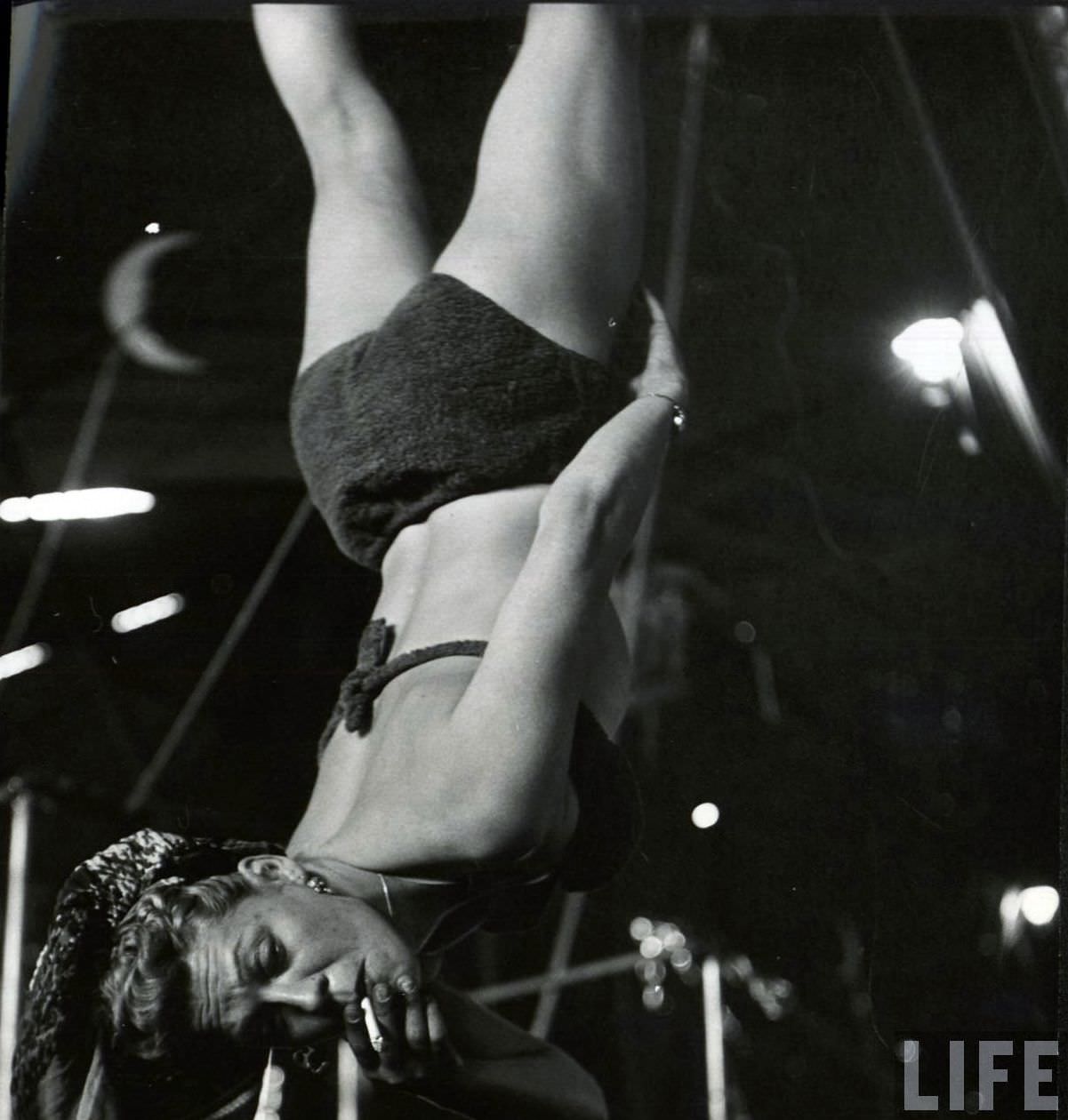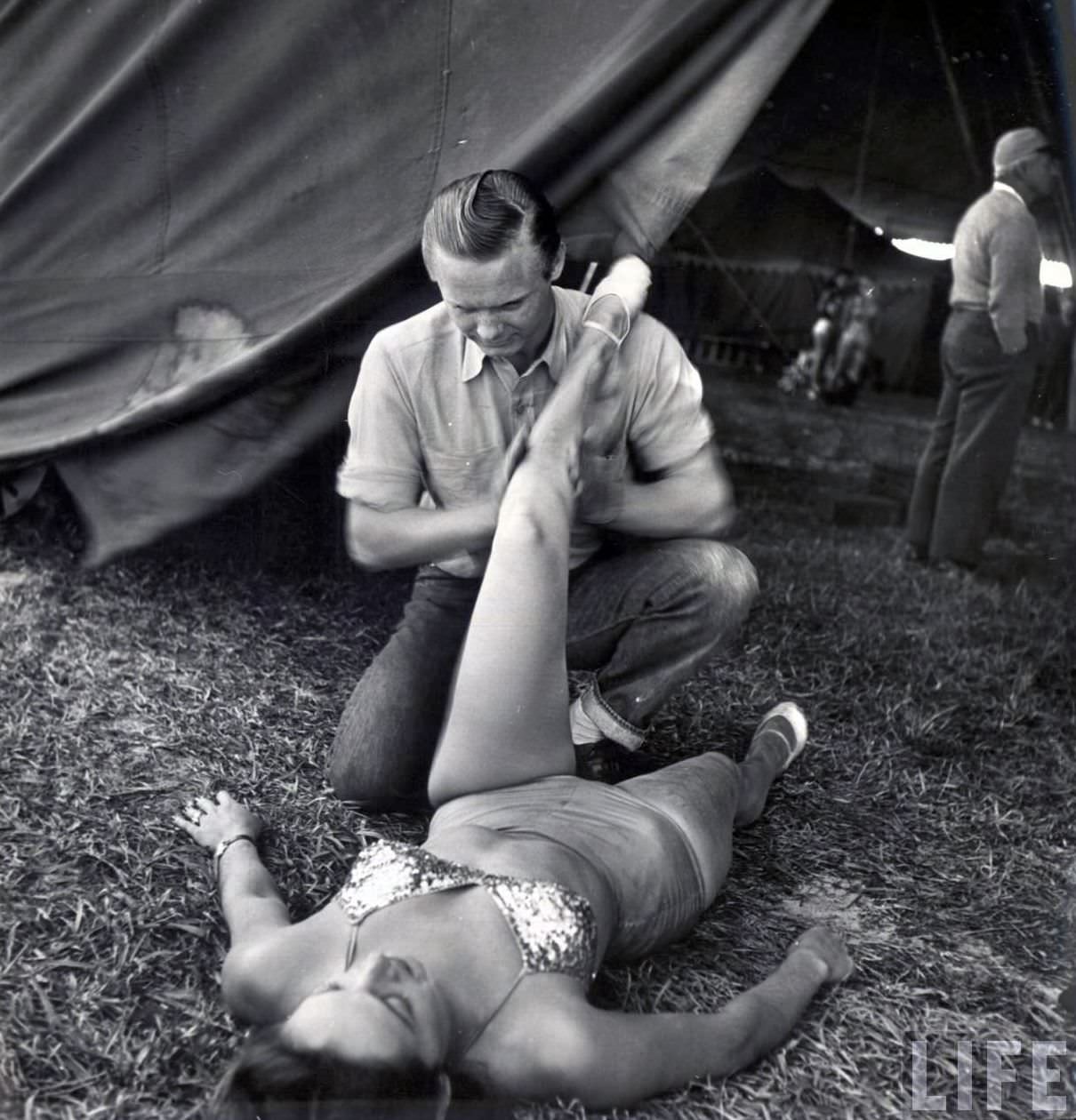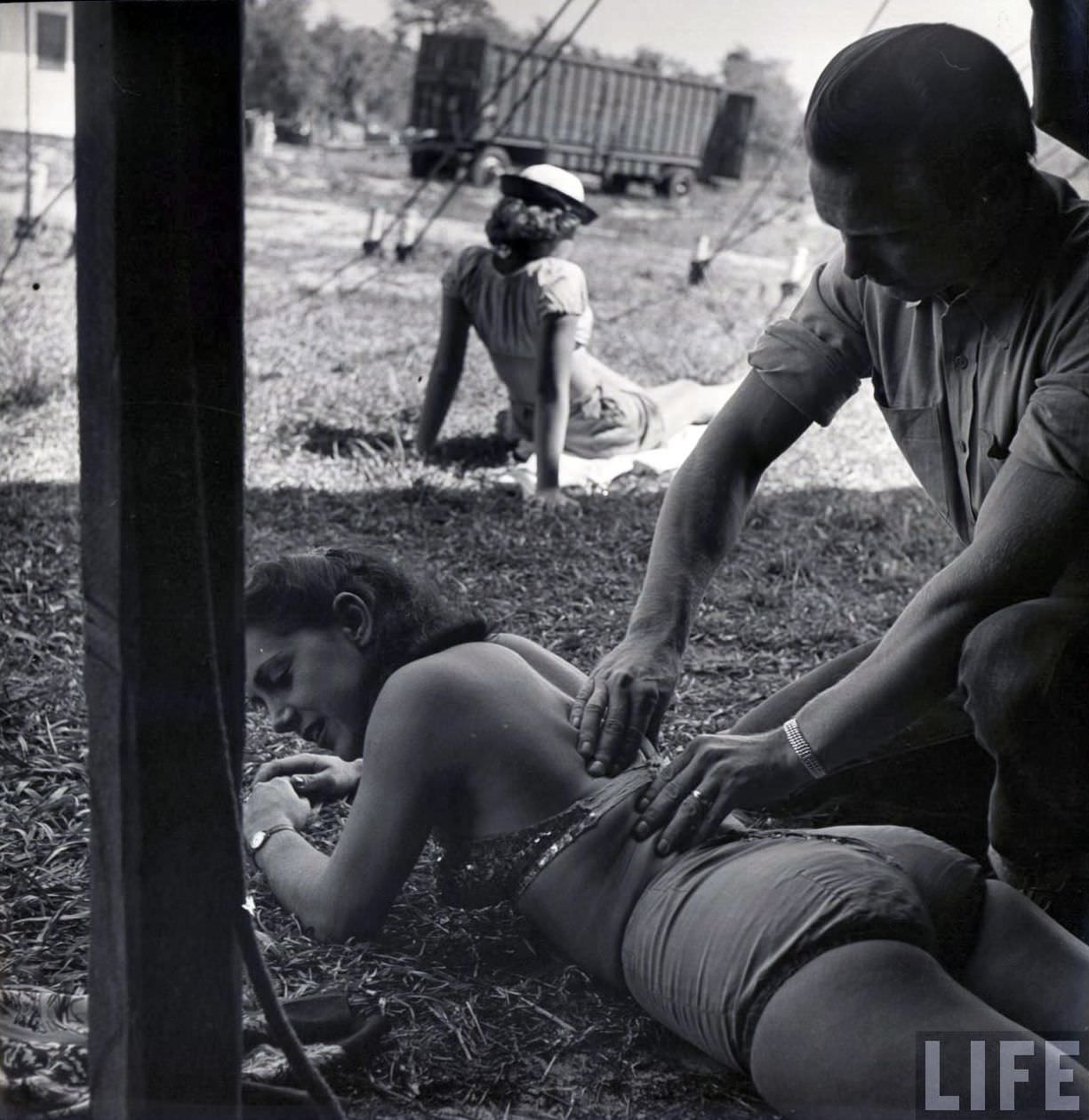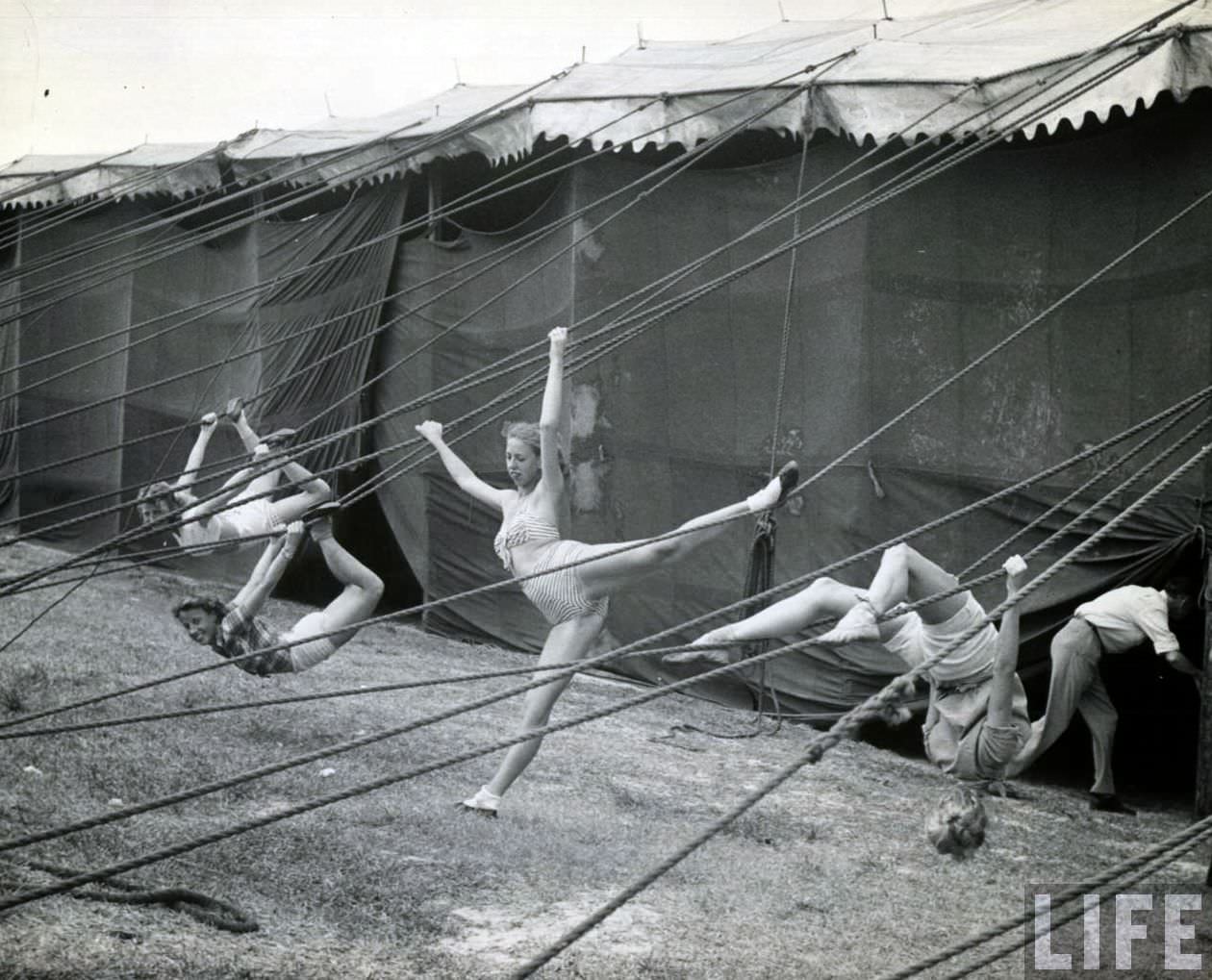In 1949, Sarasota, Florida, served as the winter quarters for the Ringling Bros. and Barnum & Bailey Circus. For the young women who performed as aerialists, acrobats, and showgirls, life here was a structured cycle of rigorous practice and communal living. This unique world was documented by photographer Nina Leen for LIFE magazine, offering a look into a profession where physical discipline was required daily.
The day for a circus performer began early. After a communal breakfast, the women would head to the sprawling grounds of the winter quarters for rehearsals. Their work attire was functional: high-waisted shorts, halter tops, and specialized footwear suited for their acts. These practice sessions were lengthy and intense, designed to perfect the routines for the upcoming tour.
Acrobats and aerialists spent hours on their apparatuses. Those in high-flying wire acts would methodically work through their sequences, focusing on timing and balance under the watchful eyes of trainers. Repetition was key to ensuring both the safety and the flawlessness of the performance. Other performers, such as the showgirls known as “gorgeous aerialistas,” rehearsed elaborate choreographed numbers that required precision and synchronization. These were not casual practices; they were demanding physical work essential for maintaining the standards of “The Greatest Show on Earth.”
Read more
Life Beyond the Big Top
When not in formal rehearsal, the performers’ lives were still immersed in circus culture. The grounds of the winter quarters were a self-contained community. The young women lived in designated housing, often sharing close quarters that fostered a strong sense of sisterhood. They took their meals together in large dining halls.
During their downtime, the performers would often continue to practice their skills informally or work on maintaining their costumes and equipment. The photographs taken by Nina Leen show these women using circus vehicles for casual rides around the property, blending their work with their leisure. Their social lives were largely confined to the circus community, a group of people who understood the unique demands of their profession. This environment created a close-knit society of independent women who chose a career of physical performance over the more common path of marriage and domestic life for women in that era.
Preparing for the Road
The time in Sarasota was focused on preparation for the national tour that would follow. Every aspect of the show, from the grand opening procession to the individual acts, was honed during these winter months. This was the period when new acts were developed and integrated into the show.
Seven years before the circus stopped performing under massive canvas tents, the 1949 season was still part of the “big top” era. The rehearsals in Sarasota were designed to be executed within the specific confines of the circus tent. The performers practiced in spaces that mimicked the dimensions of the performance rings, ensuring that every movement was perfectly staged for the audience. The work done in Sarasota was the foundation for the hundreds of shows they would perform across the country.


